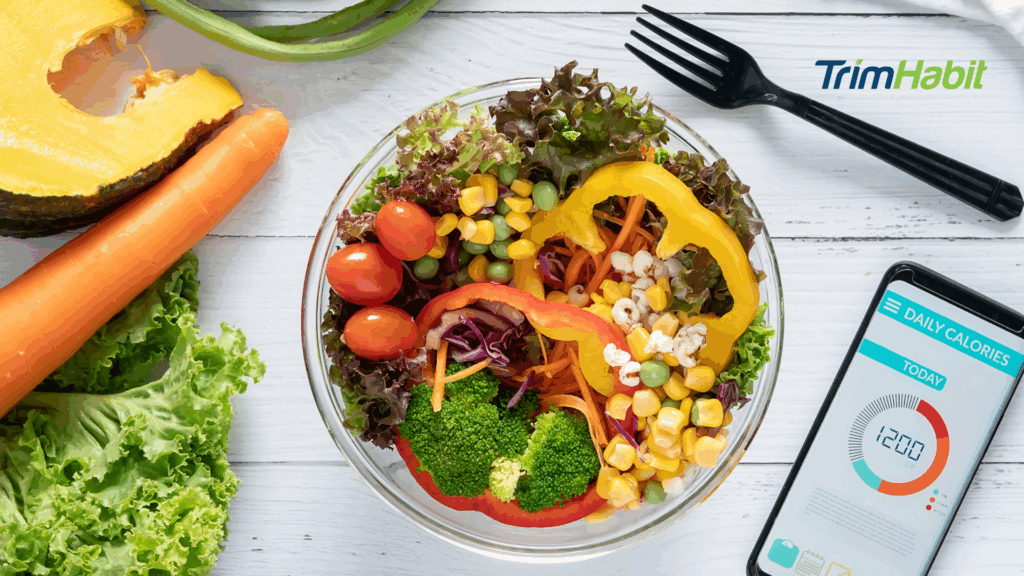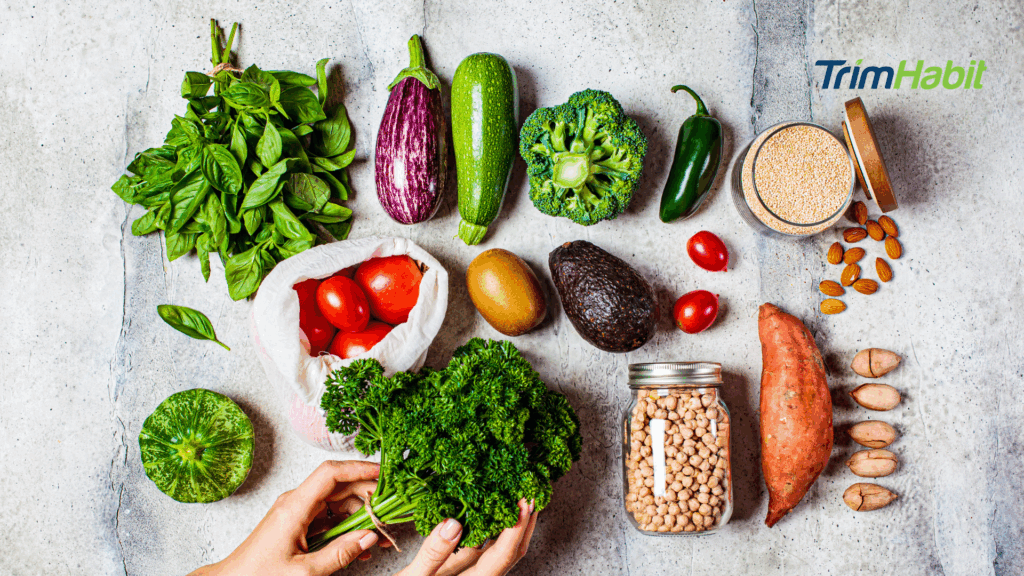Finding the right balance of nutrients is essential for weight loss. While exercise and a healthy lifestyle play crucial roles, the importance of a well-rounded diet cannot be overlooked.
Chicken often takes center stage as a go-to protein source for those aiming to shed unwanted pounds among the many food choices. However, a debate has long simmered within the health and fitness community: which is superior for weight loss, chicken breast or chicken thighs?
This article will delve into the comparison between chicken breast vs chicken thighs for weight loss, examining their nutritional profiles, calorie content, fat content, and protein content. We’ll also discuss the impact of cooking methods on their healthiness and offer some practical tips to incorporate them into a weight loss plan. By the end, you’ll have a clearer understanding of whether chicken breast or chicken thighs are the better choice for your weight loss journey.
Chicken Breast For Weight Loss
The chicken breast is widely appreciated for its popularity and nutritional value. A skinless, cooked chicken breast weighing 172 grams contains an impressive 54 grams of protein, resulting in a protein content of approximately 31 grams per 100 grams.
Furthermore, a chicken breast provides 284 calories in total, equating to approximately 165 calories per 100 grams. Notably, protein constitutes a substantial portion, accounting for 80% of the total calories, while the remaining 20% is attributed to fat. These figures highlight the chicken breast’s prominence as a lean protein source with a relatively low calorie count.
Chicken breast meat is highly favored by bodybuilders and individuals seeking to manage their weight due to its exceptional protein content. Adding chicken breast into your diet can be advantageous as its high protein content aids in muscle growth and repair, making it a popular choice for those focused on building a well-defined physique. With its high protein and low-calorie content, it won’t contribute to weight gain.
Benefits Of Chicken Breast
The low-fat protein in chicken breast has many important benefits that make it a good addition to many eating plans. These benefits include:
High in Protein
Chicken breast is a lean source of protein, which is essential for weight loss. Protein helps increase satiety, making you feel fuller for longer, and it also requires more energy to digest, leading to a higher calorie burn during digestion. Additionally, protein promotes the preservation of muscle mass, which is important for maintaining a healthy metabolism.
Builds and Maintains Muscle Mass
Protein plays a crucial role in preserving and building muscle mass. Chicken breast, being rich in protein, can support muscle strength and growth. It is worth noting that maintaining muscle mass is essential for overall health, regardless of whether your goal is to increase muscle size. Research has shown a direct connection between muscle mass, strength, and mortality rates in older individuals. Thus, preventing muscle loss is vital for individuals of all ages, even if their aim is not to build larger muscles1,2.
Strengthens Bones
Scientists and doctors used to think that eating a lot of animal protein could make bones less dense and make them more likely to break. But a new study shows that protein and calcium work together to help protect bones. Eating enough protein is important to keep bones strong and healthy3.
Reduces Appetite
Protein makes you feel full, making you less hungry and stopping you from overeating. One small study of overweight men on low-calorie diets found that those who ate more protein had improved appetite control and satiety. Because it has a lot of energy, chicken breast is a good choice to feel more full after a meal4.
Boosts Serotonin and Melatonin
Tryptophan is an important amino acid found in the chicken breast that helps control how proteins are made. Tryptophan also makes it easier for your brain to make serotonin. People who don’t have enough serotonin may feel sad or have trouble remembering things. Tryptophan is also a part of the hormone melatonin, which is important for sleep5,6.
Low in Calories
Chicken breast is relatively low in calories compared to other cuts of meat, especially when the skin is removed. By choosing chicken breast as a protein source, you can keep your calorie intake in check while still meeting your nutritional needs.
Low in Fat
Chicken breast is naturally low in fat, particularly saturated fat. This is beneficial for weight loss as a high intake of saturated fat is associated with weight gain and various health issues. By opting for skinless chicken breast, you can further reduce the fat content.
Potential Disadvantages Of Chicken Breast
Chicken breast is often recommended as part of a weight loss diet due to its high protein and relatively low-fat content. However, there are a few potential side effects to consider when consuming chicken breast for weight loss:
Portion Control
While chicken breast is a lean protein source, it still contains calories. Consuming large portions or excessive amounts of chicken breast without considering your overall calorie intake can lead to weight gain rather than weight loss. It is important to maintain portion control and incorporate it as part of a balanced, calorie-controlled diet.
Lack of Variety
Relying heavily on chicken breast as the primary protein source in your weight loss diet may lead to a lack of dietary variety. A well-rounded diet includes diverse nutrient-rich foods from different food groups. Incorporating lean protein sources, such as fish, legumes, and tofu, can help ensure you get a wider range of nutrients.
Nutrient Deficiencies
While chicken breast is a good source of protein, it may not provide sufficient amounts of certain nutrients essential for overall health. Complementing chicken breast with various fruits, vegetables, whole grains, and healthy fats is important to ensure you’re meeting your nutrient requirements.
Food Sensitivities or Allergies
Some individuals may have sensitivities or allergies to chicken or its components, which can cause digestive discomfort or other adverse reactions. If you experience any symptoms after consuming chicken breast, it’s best to consult with a healthcare professional to determine the underlying cause.
Cooking Methods
The way the chicken breast is prepared can impact its nutritional profile. Opting for healthier cooking methods like baking, grilling, or steaming is recommended over deep-frying or breading, which can add extra calories and unhealthy fats.
Chicken Thighs For Weight Loss
Chicken thighs are a widely favored and cost-effective alternative to chicken breasts. Unlike chicken breast, chicken thighs belong to the dark meat category. This distinction arises from the higher myoglobin content found in the muscle tissue of chicken legs. Myoglobin plays a vital role in facilitating oxygen delivery to muscles, resulting in increased muscle coloration during physical activity7. The heightened activity and myoglobin levels contribute to the rich flavor and succulence of chicken thighs, making them a popular choice for those seeking flavorful and tender cuts of poultry.
Dark chicken meat, when cooked and skinless, contains approximately 13.5 grams of protein in a single 52-gram serving. This translates to an impressive protein content of 26 grams per 100 grams. Chicken thighs, known for their rich flavor, provide a range of 109 to 209 calories per 100 grams. Notably, protein represents 53% of the calorie composition, with the remaining 47% attributed to additional fat content. The protein-rich nature of dark chicken meat makes it a valuable addition to a balanced diet, offering a delectable source of nourishment.
Benefits Of Chicken Thighs
Chicken thighs might not be the first thing that comes to mind when shedding those extra pounds. However, these succulent chicken thigh meat cuts can be valuable in your weight loss journey. Packed with protein, essential nutrients, and healthy fats, chicken thighs offer several benefits that support your weight loss goals. These include:
Portion Control Aid
Thighs are smaller than chicken breasts, which makes sense. A chicken thigh is also much closer to the recommended 3 to 4-ounce serving of protein than a chicken breast is, so picking a thigh over a breast is a simple way to keep portion sizes in check.
Zinc Rich
Chicken thighs have almost 70% more zinc than chicken breasts. Zinc is one of the most important minerals in the body. It is needed for over 300 enzymes to work, including those that help with metabolism, nerve function, and defense.
High Protein Content
Chicken thighs are also rich in protein, which is again, is crucial for weight loss. High protein content can be beneficial for those aiming to meet their protein needs, support muscle growth, manage weight, and maintain overall health.
Satisfying and Filling
The combination of protein and healthy fats in chicken thighs helps keep you feeling fuller for longer periods. This can prevent overeating and snacking on unhealthy foods, ultimately supporting your weight loss efforts.
Nutrient Density
Chicken thighs provide essential nutrients, including vitamins (B vitamins) and minerals (such as iron and zinc). These nutrients support overall health and energy metabolism, ensuring your body functions optimally while losing weight.
Versatility in Cooking
Chicken thighs can be prepared in various ways, such as grilling, baking, or stir-frying. Their versatility allows you to create flavorful and satisfying meals while controlling ingredients and portion sizes. This helps you adhere to a healthy eating plan without feeling deprived.
Cost-effective Option
Compared to other cuts of chicken, chicken thighs are generally more affordable. If you’re on a budget, incorporating chicken thighs into your diet can provide a cost-effective source of lean protein for weight loss.
Potential Disadvantages Of Chicken Thighs
Chicken thighs can be a tasty and nutritious part of a balanced diet, but there are a few potential disadvantages to consider when consuming it. These can include:
Higher Fat Content
Chicken thigh contains more fat, particularly saturated fat, compared to chicken breast. Consuming excessive amounts of saturated fat can increase the risk of heart disease and elevate cholesterol levels. Practicing portion control and balancing your overall fat intake from various sources is important.
Increased Calorie Intake
Due to the higher fat content, chicken thigh typically contains more calories than chicken breast. If you’re trying to lose weight or maintain a calorie deficit, it’s essential to be mindful of portion sizes and consider the overall calorie content of your meals.
Reduced Nutrient Density Potential
While chicken thighs provide protein and some essential nutrients, it may have a lower nutrient density than other cuts or leaner protein sources. If you heavily rely on the chicken thigh as your primary protein source, you may miss out on other nutrients in leaner meats, fish, legumes, or plant-based protein alternatives.
Cholesterol Concerns
Chicken thighs, especially with the skin, contain higher amounts of dietary cholesterol than chicken breast. If you have specific dietary restrictions or concerns related to cholesterol, it’s important to moderate your intake of chicken thigh and consider leaner protein options.
Foodborne Illnesses
As with any type of chicken, there is a risk of foodborne illnesses if the chicken is not handled, cooked, or stored properly. Ensuring that chicken thigh is cooked thoroughly to an internal temperature of 165°F (74°C) can help reduce the risk of bacterial contamination.
Chicken Breast vs Chicken Thighs For Weight Loss: Main Comparisons
Chicken breasts and thighs can be part of a healthy diet for weight loss. Here’s a comparison on the main factors to consider:
Calorie and Fat Content
Chicken breast is generally lower in calories and fat compared to chicken thighs. A 3.5-ounce (100-gram) serving of skinless, boneless chicken breast typically contains around 165 calories and 3.6 grams of fat.
In contrast, the same serving size of skinless, boneless chicken thigh contains approximately 209 calories and 11 grams of fat. Choosing chicken breast can help you save on calories and fat if you’re aiming for weight loss.
Protein Content
Both chicken breast and chicken thighs are good sources of protein. Chicken breast, however, tends to have a slightly higher protein content than chicken thighs making it a popular choice for those seeking a protein-rich option in their diet..
Nutrient Profile
Chicken breast is generally considered leaner and has lower saturated fat levels than chicken thighs. It is also slightly higher in specific vitamins and minerals, such as vitamin B12 and selenium. While chicken thighs contain more fat, they also provide more monounsaturated fats, which can have some health benefits when consumed in moderation.
Taste and Texture
Chicken thighs are often considered more flavorful and juicier compared to chicken breast. The higher fat content contributes to a richer taste and tenderness. However, taste preferences vary from person to person, so it’s a matter of personal preference.
Cooking Methods
Both chicken breast and thighs can be prepared in various ways, including grilling, baking, sautéing, or roasting. However, the higher fat content makes chicken thighs less likely to dry out during cooking and can be more forgiving if slightly overcooked.
Ultimately, the choice between chicken breast and chicken thighs for weight loss comes from personal preference, dietary goals, and overall calorie and fat intake. Chicken breast may be a better option if you aim for lower calorie and fat consumption. However, incorporating moderate portions of chicken thighs as part of a balanced diet can still be a healthy choice. Remember that weight loss is best achieved through a well-rounded, calorie-controlled diet that includes a variety of nutrient-rich foods and regular physical activity.
Summary
Chicken breast is lower in calories and fat, higher in protein, and has a leaner nutrient profile. It offers benefits such as muscle maintenance, bone strength, appetite control, and the production of serotonin and melatonin. However, portion control, lack of variety, nutrient deficiencies, and potential allergies or sensitivities should be considered.
On the other hand, chicken thighs have a higher fat content, but they provide more zinc, pack a high protein content, and can keep you satisfied due to their healthy fats. They also offer versatility in cooking, cost-effectiveness, and nutrient density. Still, they may contribute to higher calorie intake and contain potential side effects related to fat content and cholesterol.
Lastly, the choice between chicken breast and chicken thighs for weight loss or overall health goals should consider individual preferences, dietary requirements, and lifestyle factors.









